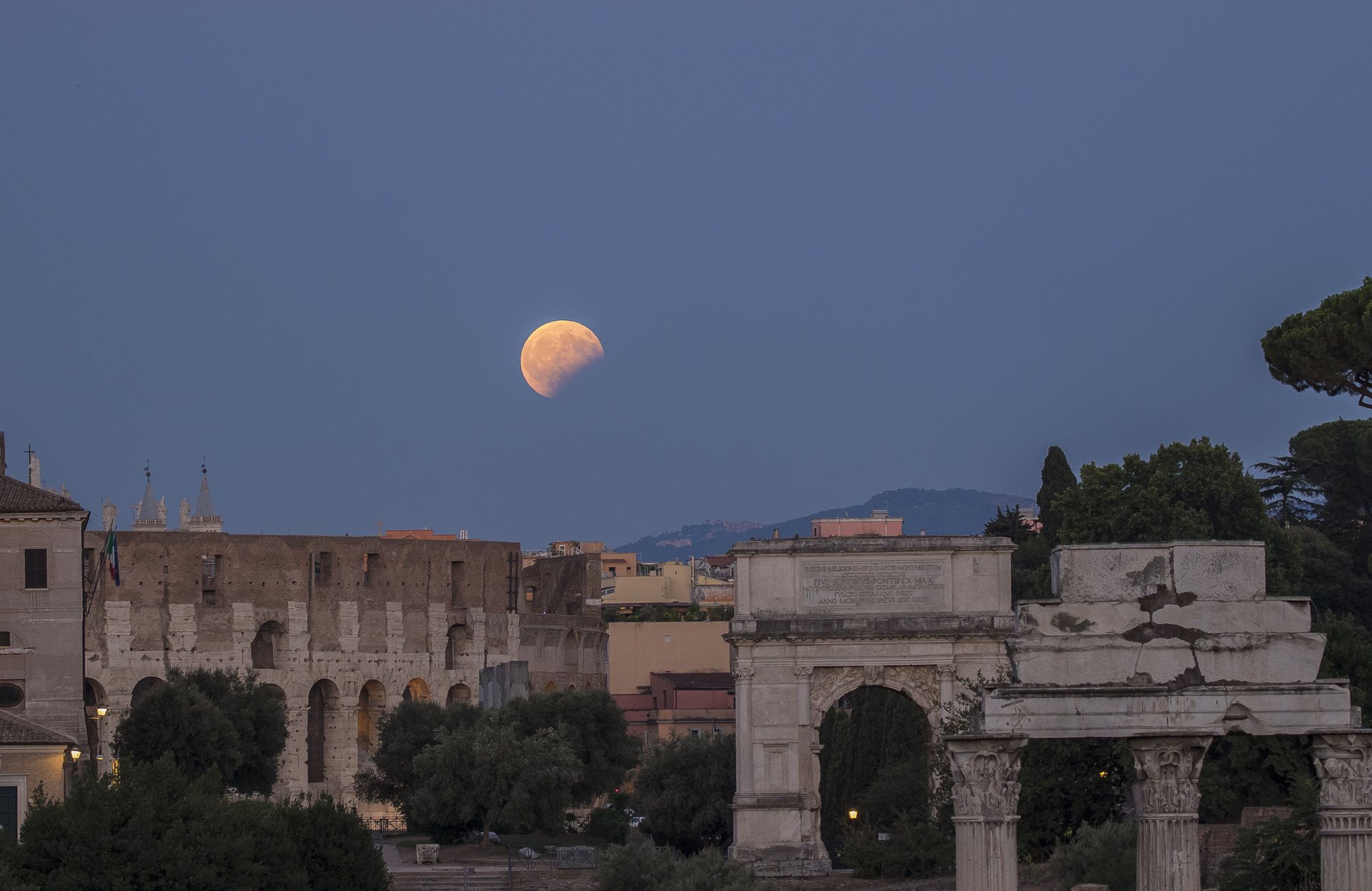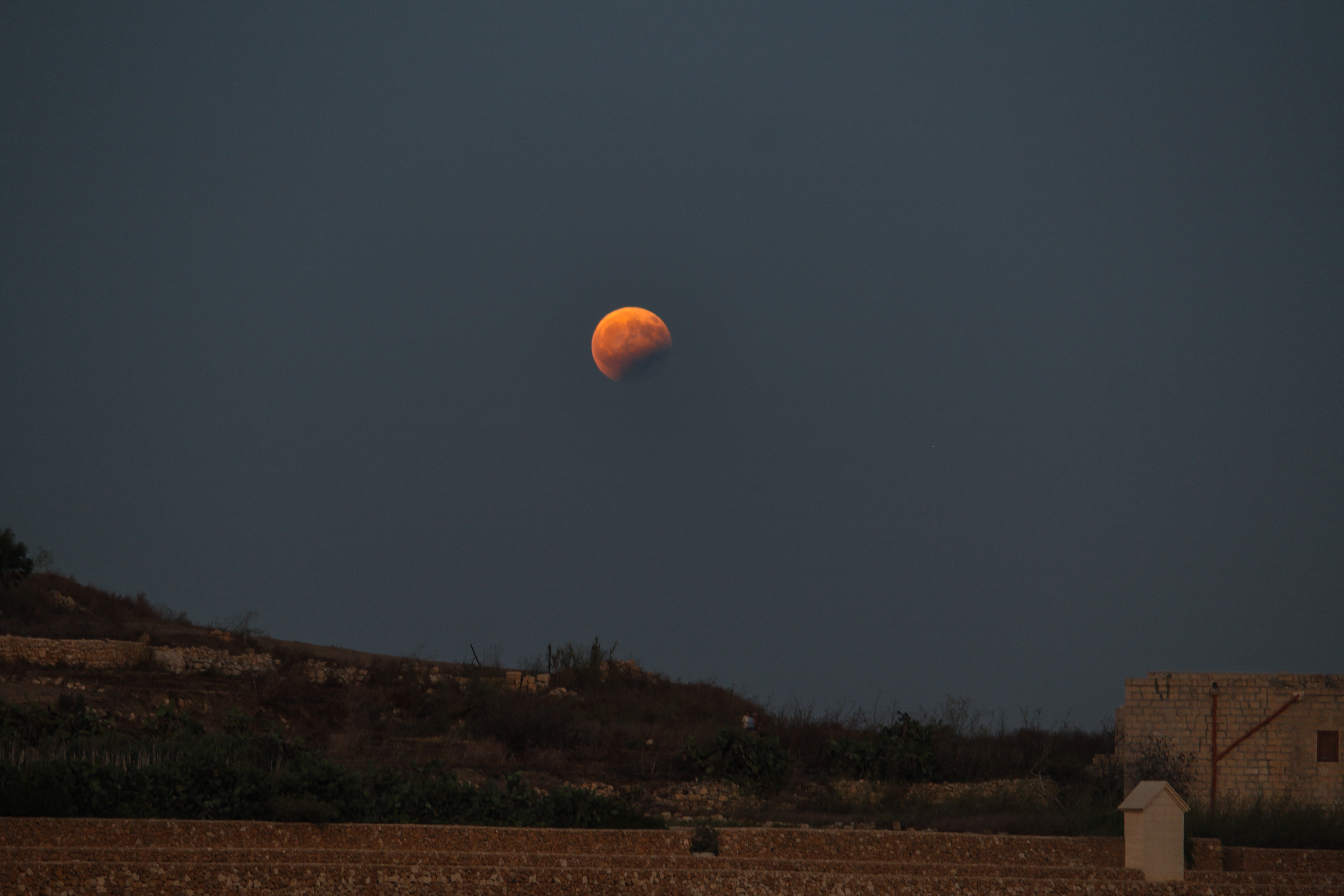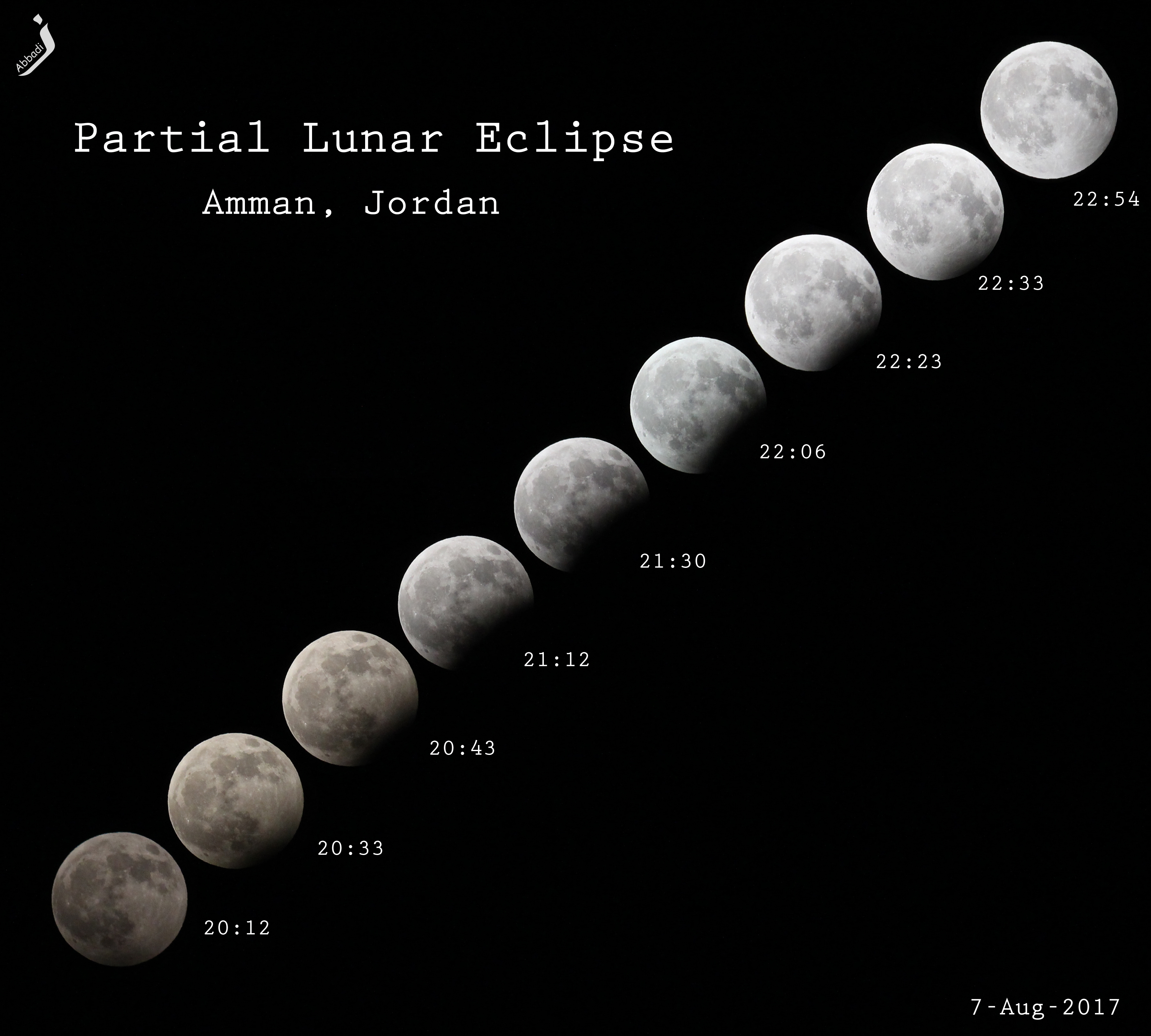Partial Lunar Eclipse: A Prequel to the 2017 Total Solar Eclipse (Photos)

In a subtle but stunning prelude to the Great American Total Solar Eclipse of Aug. 21, a partial lunar eclipse graced the night skies over Europe, Africa, Asia and Australia on Monday (Aug. 7).
Lunar eclipses occur when the Earth is positioned in between the sun and the moon, casting a reddish-brown shadow on the lunar surface. Monday's lunar eclipse was only a partial eclipse, so Earth's shadow darkened only a portion of the moon. The total solar eclipse of Aug. 21, however, will be a far more spectacular event.
Because of how the moon orbits the Earth, lunar eclipses always coincide with a full moon, and solar eclipses coincide with the new moon. The two types of eclipses always come in pairs, with one preceding the other by two weeks.

Skywatchers in North America who are in the path of the upcoming total solar eclipse didn't get to see Monday's lunar eclipse, because the moon was below the horizon at the time. However, skywatchers and astronomers in the East captured plenty of amazing photos and videos of the astronomical event to share online. [Shadowy Moon: Penumbral Lunar Eclipse Photos]
In Amman, Jordan, astrophotographer Zaid Abbadi brought his camera and coffee mug outside to photograph the lunar eclipse as the moon rose high in the evening sky. The moon appears slightly yellow closer to the horizon due to the scattering of light in Earth's atmosphere. As the moon begins to shine brighter and whiter, Earth's shadow begins to hide a chunk of the lunar surface.
The same atmospheric effect that makes the moon appear darker near the horizon is also responsible for colorful sunsets. During total lunar eclipses, it gives Earth's shadow a reddish tint on the surface of the moon.
Andrea Muscat, a photographer and meteorologist on the island of Gozo in the Maltese archipelago of the Mediterranean Sea, photographed a more orange-hued moon during Monday's partial lunar eclipse.
Get the Space.com Newsletter
Breaking space news, the latest updates on rocket launches, skywatching events and more!

"The event lasted for just over one hour, starting at moonrise," Muscat told Space.com in an email. "The fact that it occurred at moonrise meant that we were entertained to [an] amazing view of the rising red moon being eclipsed by the Earth’s shadow."
In Italy, astrophysicist Gianluca Masi of the Virtual Telescope Project broadcasted a live view of the full moon rising over Rome as the partial lunar eclipse took place. This screenshot of the Virtual Telescope Project's webcast was taken about 7:30 p.m. local time (1830 GMT), less than an hour after the moon emerged from the horizon and just 10 minutes after the peak of the lunar eclipse.
Email Hanneke Weitering at hweitering@space.com or follow her @hannekescience. Follow us @Spacedotcom, Facebook and Google+. Original article on Space.com.
Join our Space Forums to keep talking space on the latest missions, night sky and more! And if you have a news tip, correction or comment, let us know at: community@space.com.

Hanneke Weitering is a multimedia journalist in the Pacific Northwest reporting on the future of aviation at FutureFlight.aero and Aviation International News and was previously the Editor for Spaceflight and Astronomy news here at Space.com. As an editor with over 10 years of experience in science journalism she has previously written for Scholastic Classroom Magazines, MedPage Today and The Joint Institute for Computational Sciences at Oak Ridge National Laboratory. After studying physics at the University of Tennessee in her hometown of Knoxville, she earned her graduate degree in Science, Health and Environmental Reporting (SHERP) from New York University. Hanneke joined the Space.com team in 2016 as a staff writer and producer, covering topics including spaceflight and astronomy. She currently lives in Seattle, home of the Space Needle, with her cat and two snakes. In her spare time, Hanneke enjoys exploring the Rocky Mountains, basking in nature and looking for dark skies to gaze at the cosmos.









